Some plants in the garden require more sunlight than others. Some grow well in partial sun, like leafy greens, beets, and other cool weather crops. Others require more energy from the sun to produce their large fruits and seeds.
Peppers grow quickly and produce bountiful harvests of large fruits. As a result, pepper plants can be demanding in terms of sunlight. In this article, I’ll share our lighting guide for growing peppers outdoors.
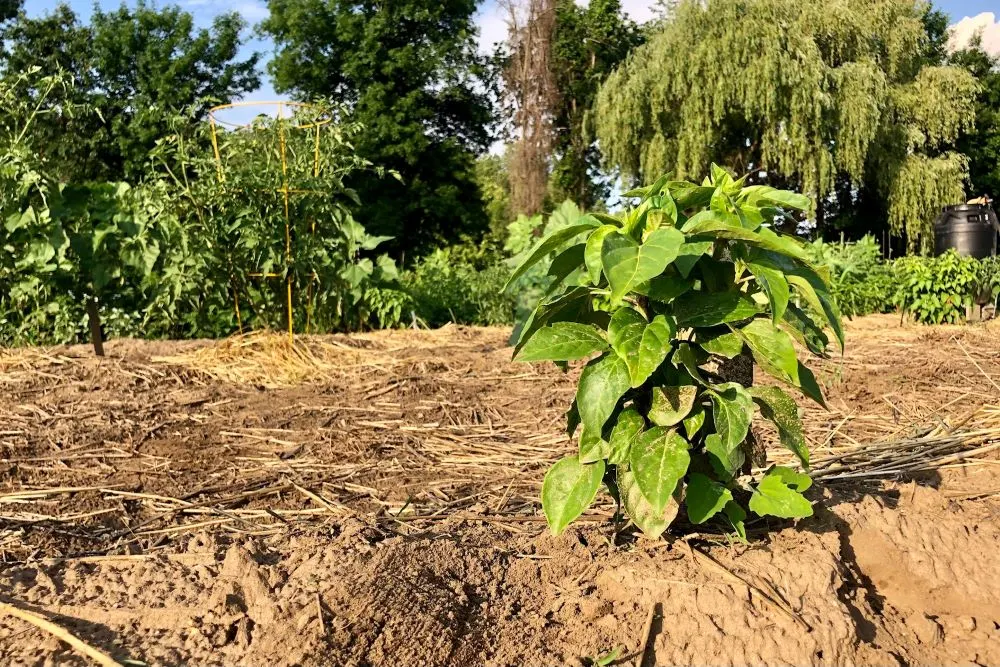
How much sun do peppers need?
From seedling to full-grown plants, peppers need strong light to grow best. If you don’t use grow lights on indoor seedlings, plants can become tall and leggy instead of low and strong. The same is true for outdoor plants.
In short, peppers should be planted in a location that receives 6-12 hours of direct sunlight daily. Prioritize morning sun over afternoon to avoid the most intense time of day for direct exposure.
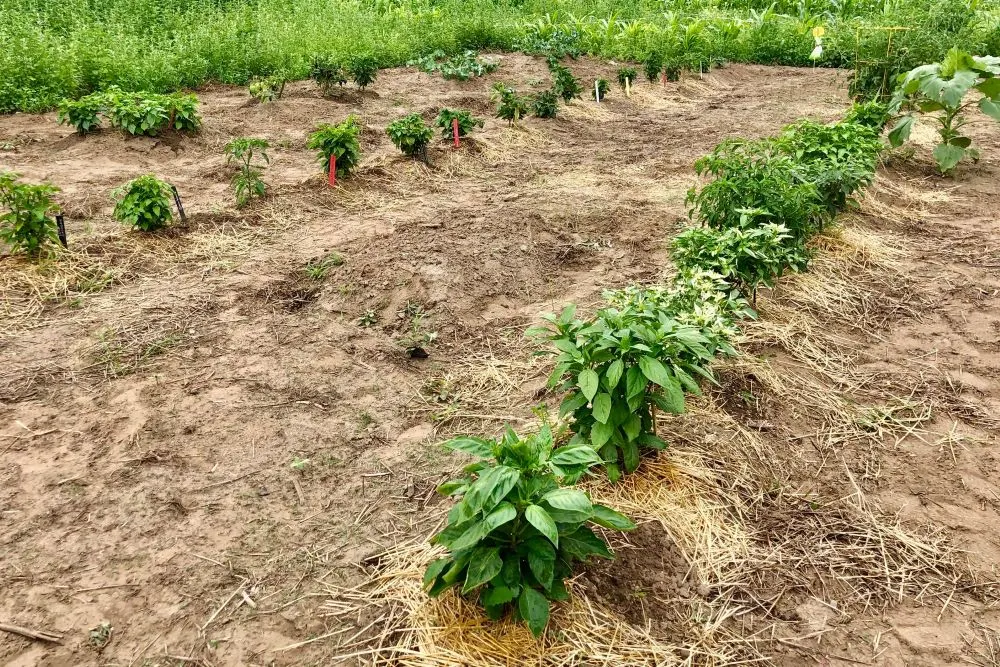
Tip: Pick a spot that gets the most sunlight by observing your available growing space before planting. There are apps available to survey your property and pick the best spot for gardening.
The more sunlight a pepper plant receives, the more energy it can use to grow its leaves, branches, and fruits. Peppers can survive off of 6 or fewer hours of sunlight, but you will likely end up with smaller harvests.
Can pepper plants grow in the shade?
If your gardening space is limited or covered, you may wonder if peppers can be grown in the shade.
While peppers prefer plenty of direct sunshine, the plants may still be grown in partial shade. Growing in full-shade is not recommended for peppers. Attempting this will lead to smaller plants and poor yields.
Note: In our experience, plants grown in a shadier location will produce less flavorful and potentially less spicy peppers. If you want to grow hotter peppers packed with flavor, give your plants plenty of sunlight.
Without any direct sunlight, water will not be used nearly as quickly by the plant. This can lead to poor soil aeration, along with slower transpiration.
However, the main concern with growing in shade is the lack of energy available to the plants for photosynthesis. Shade leads to slower growth, smaller harvests, and generally unhappy pepper plants.
Transitioning peppers from indoors to sunlight
While peppers grow best in full sun, the transition from indoor grow lights to outdoor sunlight should be done slowly. Sunlight is intense, so the hardening off process must be gradual.
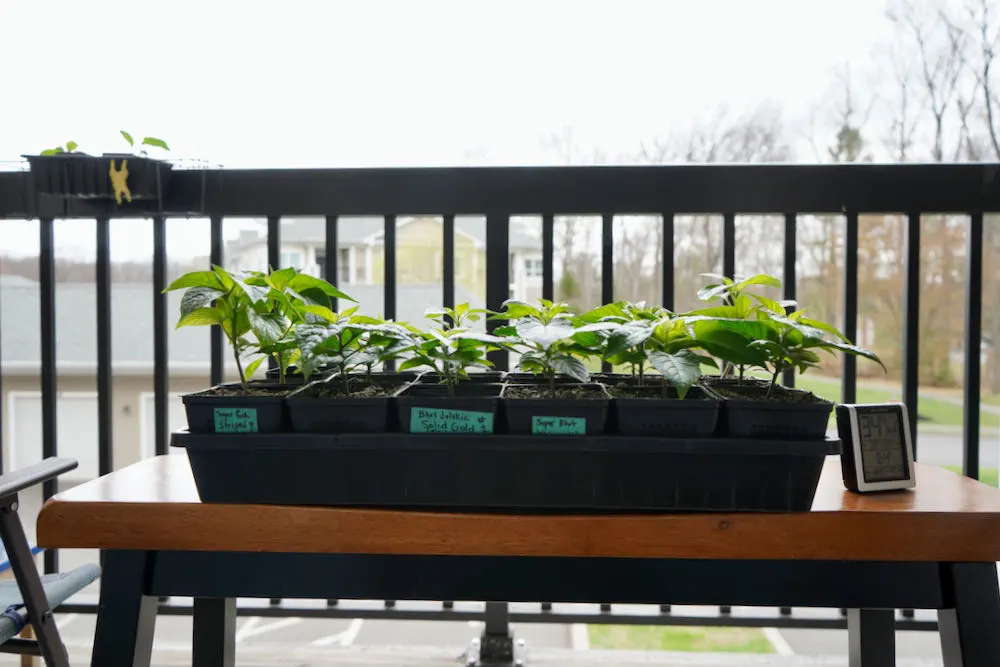
When you are transplanting peppers outdoors, begin with just 30 minutes in the shade. After a few days, expose them to some direct sunlight, increasing sun exposure gradually over a 2-3 week period. After this, your plants should be able to handle full-sun, all day long.
This slow process helps avoid leaf scorch from the intense light. The energy from the sun will then be usable by the plants, instead of causing them harm.
Can peppers get too much sun?
If you rush the hardening off process, your plants will undoubtedly suffer from sun scald on the leaves, wilting, and even complete leaf drop. It won’t likely kill the plants, but they may need to re-acclimate by growing new foliage, effectively slowing down the time to harvest.
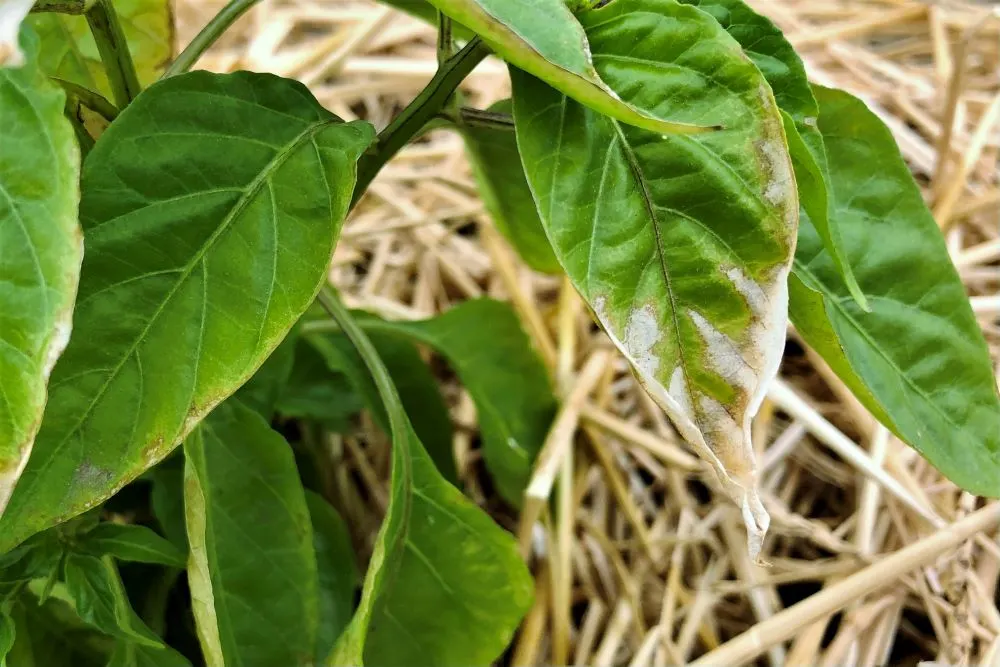
However, even properly hardened off pepper plants can get too much sun. During the hottest days of summer, the afternoon sunshine (usually between 3:00-5:00 PM) can cause stress for pepper plants.
During a particularly hot period, provide temporary shade during the afternoon hours. This can be done using shade cloth, or by moving potted plants into a spot with afternoon shade.
Growers in zones 9+ may need to plan for extreme temperatures by employing one or several of the above techniques. Shade cloth can help keep the peppers from dropping flowers during a heatwave, increasing overall plant yields and decreasing stress.
What is sun scald?
Sun scald is essentially a sunburn for your plants. It can affect both leaves (leaf scorch) and fruits. Tender plants that are not adjusted to direct sunlight are the most vulnerable.
Fruits can become burned when they are exposed to prolonged direct sunlight. The leaves of your pepper plants normally provide shade to the hanging fruits, but if they become exposed, they may develop soft spots.
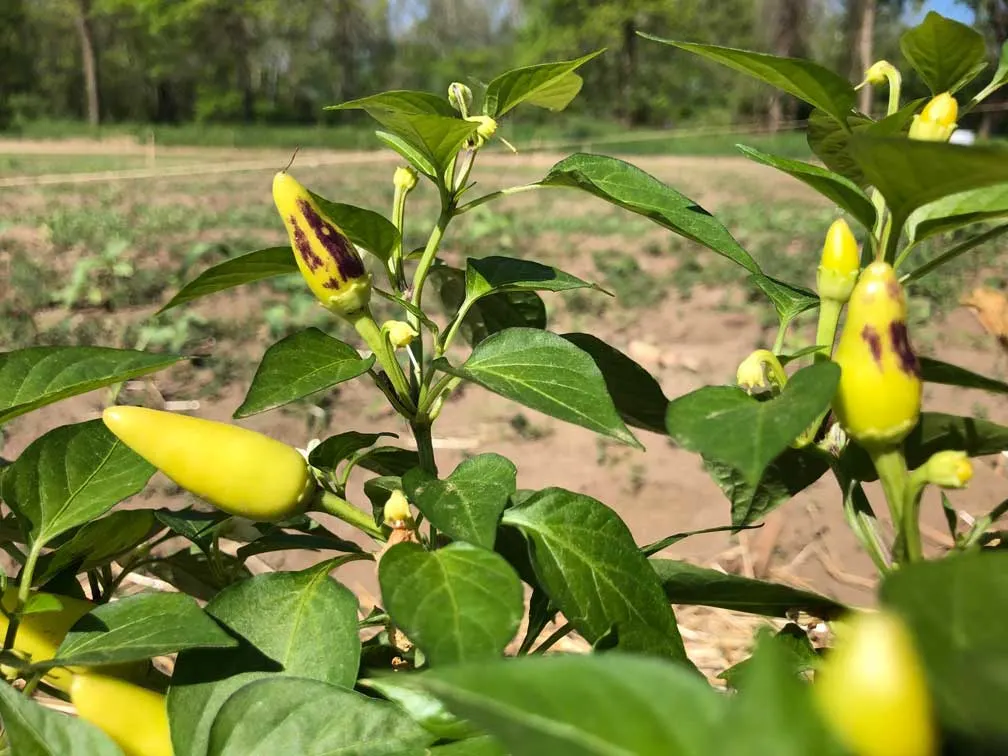
This can cause fruits to become unusable, eventually leading to rot or mold. Avoid sun scald by hardening off plants properly, and by providing shade to the fruits as they are developing. Again, afternoon sun is the most intense, so the plants may need a bit of relief during particularly hot weather.
Can you grow peppers in a sunny window?
Many growers wonder if the sunlight from a sunny window is sufficient for growing peppers. We have personally experimented with growing seedlings and potted pepper plants in windows.
Unfortunately, sunlight through a window is not ideal for growing pepper plants, regardless of age. Young pepper seedlings will likely grow to be leggy and weak, and full plants may not produce harvests.
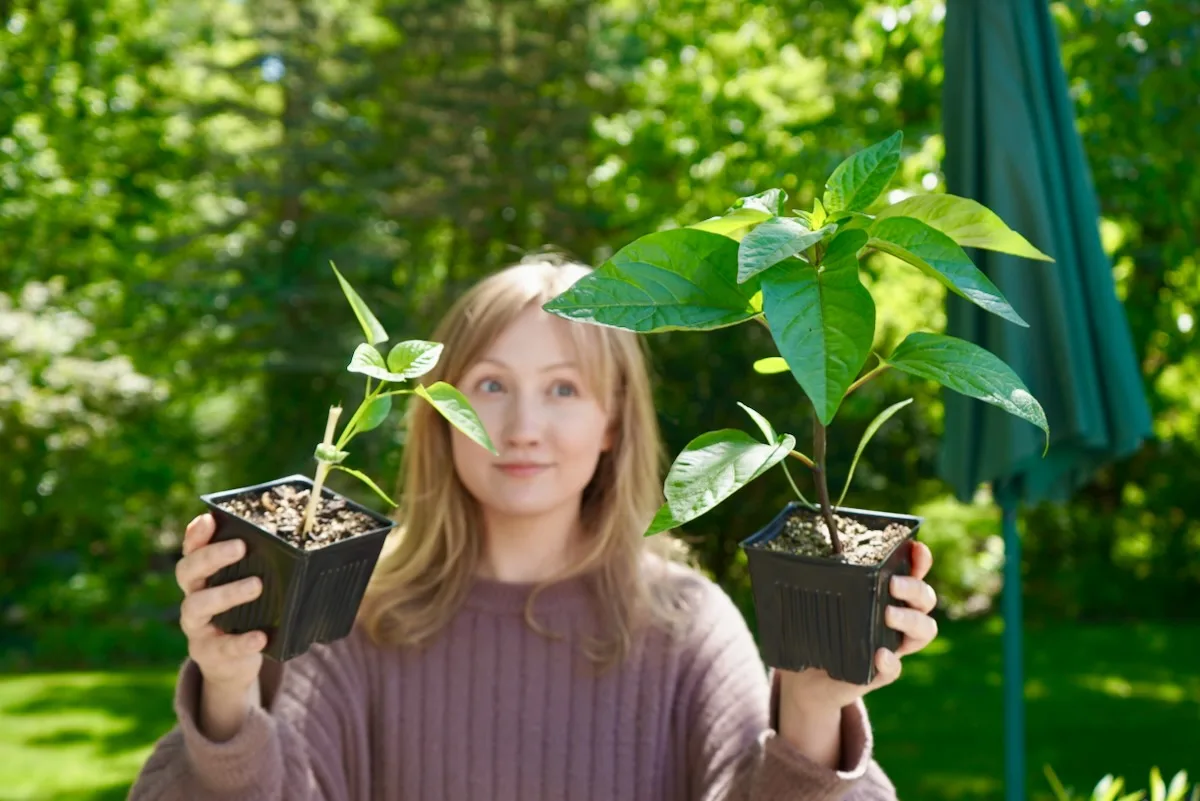
This is due to the limited time and intensity of the sunlight that reaches plants through a window. Some plant varieties thrive with filtered and/or indirect sunlight, but not peppers.
For indoor growers, I recommend using an efficient grow light for seedlings or full plants. In particular, LEDs are more affordable than ever and can ensure your plants get a strong start to the season.
I highly recommend Viparspectra’s p1000 LED light for a starter grow light.
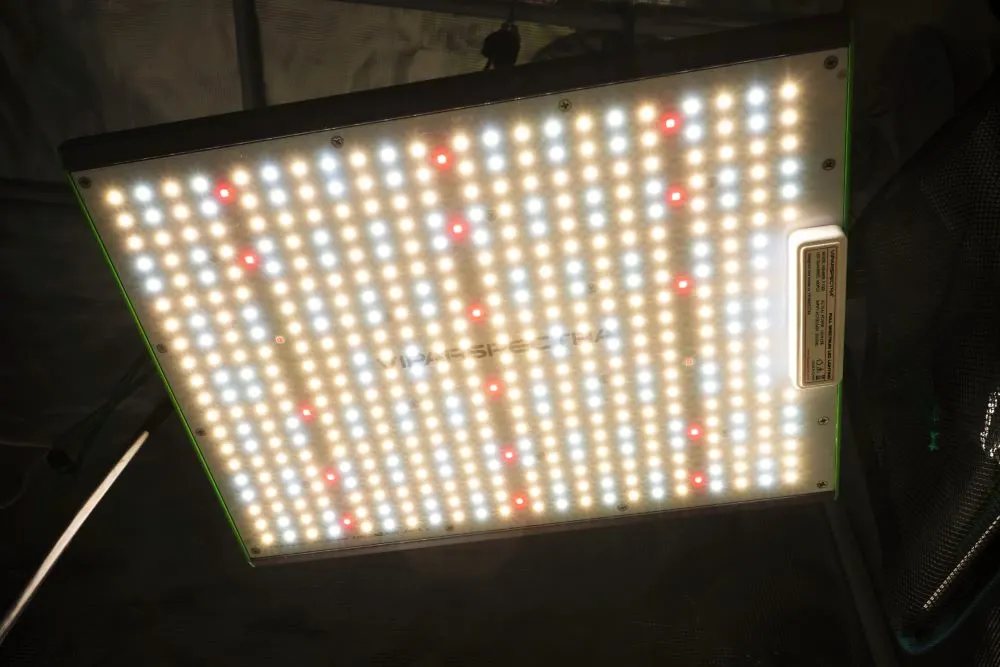
If you must use a window for growing peppers, find a south-facing window that is not obstructed by trees or other shading objects. South is the ideal direction because it will receive morning, mid-day and afternoon sunlight (in the Northern hemisphere).
When to plant peppers
If you are planning to grow peppers from seed, you will need to determine when to plant them indoors. This depends on your particular climate, and can vary from early January, all the way to early May.
If you live in a warm climate with a short winter, you can plant much earlier than those in cooler climates. See our chart on when to plant pepper seeds here.
Generally speaking, pepper seeds should be sown indoors 4-6 weeks prior to your last local frost date. This allows the plants to get a head start indoors, prolonging the growing season.
If your climate doesn’t experience freezing temperatures, you may be able to plant at any time of the year. However, you should time it so the plants are not too heat-stressed during the fruiting stage.
What temperatures kill pepper plants?
Peppers grow best in temperatures between 70-85°F. Most varieties can tolerate temperatures as low as 50°F before showing signs of stress, and up to 100°F. This range will vary slightly based on the species of pepper.
In short, temperatures below 32°F will cause most pepper plants to die. If it is a soft freeze, where the roots do not freeze, your plants may survive. However a hard freeze will kill almost any pepper plant.
Fun fact: Capsicum pubescens pepper varieties are the only domesticated pepper plants that are known to tolerate cold well. Capsicum flexuosum is a wild pepper species that is winter hardy to 10°F!
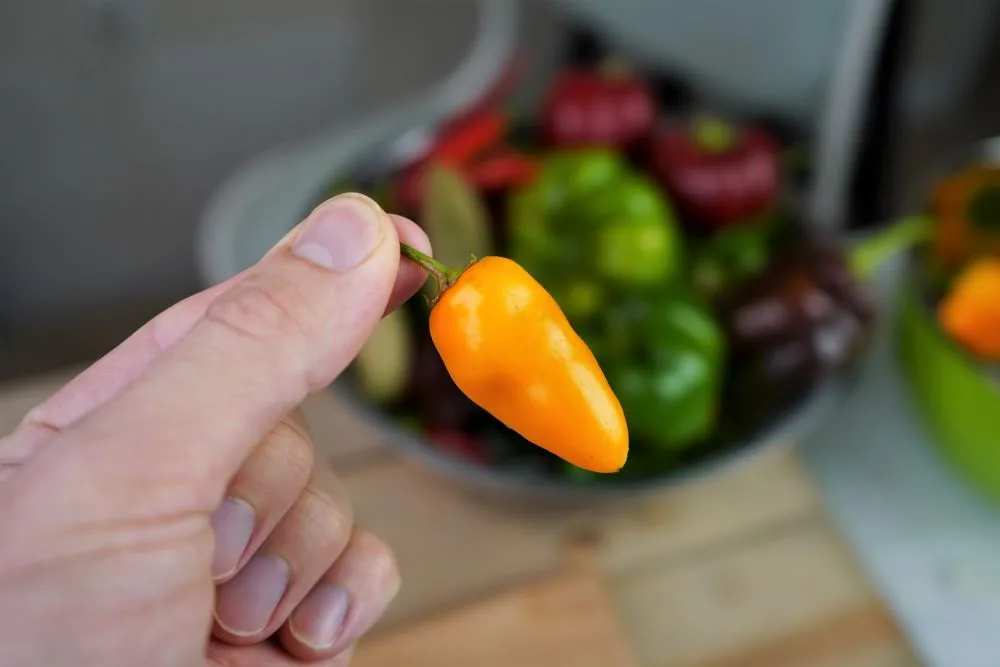
Provide protection from cold temperatures with garden fabric, a thick layer of mulch, or by moving plants closer to the warmth of your home.
Read Next:
I hope this article helps you determine how much sunlight to give your peppers. I wish you the best of luck growing your plants this season!


Francis
Wednesday 17th of April 2024
HI from Cape Breton Nova Scotia. We appreciate all the information that you freely give out. My wife and I just got into gardening and peppers are my favorite plant to grow. Big thanks for your videos and I will be buying your book Growing Perfect Peppers. Hope I got the name of your book right. Thanks Again.
peter sebo
Wednesday 17th of April 2024
I saved plants that just have the branches through the winter. Will they flourish again with summer and sun again? Ty in advance, cheers - peter
peppergeek
Friday 19th of April 2024
They should! If they're still alive, they will begin regrowing leaves from the nodes on the stems once they are placed in a warm/bright location.
Daemach
Wednesday 17th of April 2024
Your recommendation for a grow light is helpful. I presume you mean using this to start the plants rather than a beginner's first purchase. I live in the city under trees, so we get partial sun in various locations, but I have four plants started that I would like to see do well, and I have been considering doing them all indoors. Do you have any recommendations for lights for the full grow cycle?
peppergeek
Friday 19th of April 2024
They can be growing to fruiting indoors. A normal 100-150W grow light can carry a few plants through to fruiting (depending on the size of each plant). You can keep the plants a bit smaller by using smaller pots if you want to squeeze more varieties into a smaller space. Bottom line, the 100W light panels are made to cover about 3x3' of space. I'd go with a 12-14 hour lighting schedule through to fruiting, and follow the manufacturers recommended hanging height (usually around 12-15 inches for mature plants with LEDs).
Jonathan
Saturday 23rd of December 2023
Hello, would you say some species should do well without afternoon shade like the jalapenos wich are native to hotter climate more than the other species? I will have a couple of different species this spring with lots of jalapenos and I want to place them to the best spots. I plan to use jalapenos to make some shade to the other species since I might use a full sun place for my peppers this year.
peppergeek
Wednesday 27th of December 2023
Jalapeños can definitely handle hot full sun, all day long. Other types, like the C. pubescens, don't like as much heat. The sun is usually not the issue, it's the temperature during the hottest part of the day. Shade can offer some relief if it gets up into the 90s or 100s in your area!
JonTopps
Tuesday 19th of September 2023
What about greenhouse plastic? I want to make a greenhouse and plant in the ground, using greenhouse plastic. Will the pepper plants like that and do well? Or would they do much better with literal direct sunlight?
peppergeek
Wednesday 20th of September 2023
Greenhouse plastic will work great for growing peppers - I'd just make sure there is good ventilation and airflow to avoid it getting too hot in there. The filtered light will be great though.